Meet Your Scallop Fishermen, Joel And Melissa Collier
Fishing StoriesWe couldn’t be more excited to introduce you to Melissa and Joel Collier, the Skipper Otto fishing family providing us with wild pink and spiny scallops!
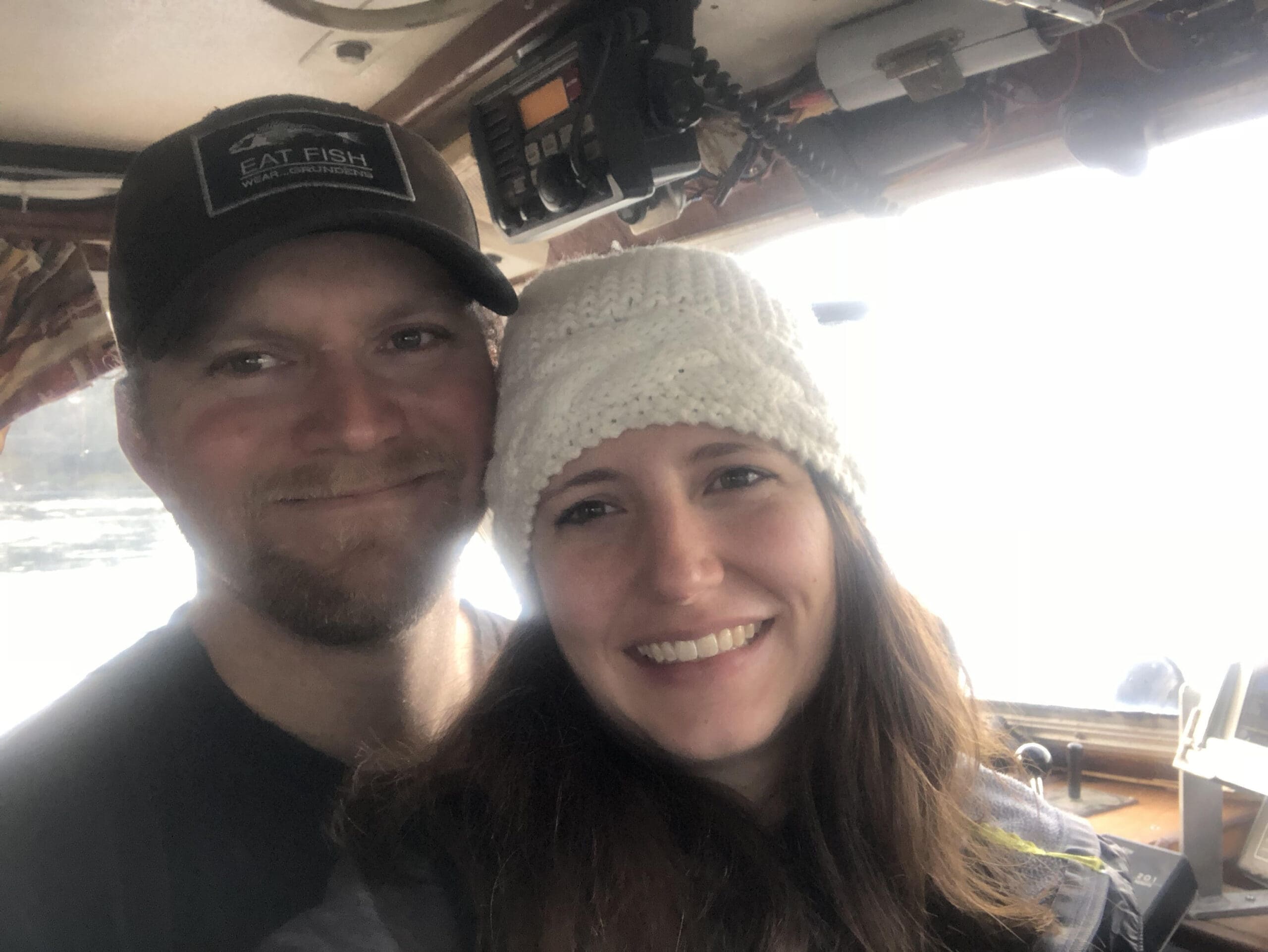
We couldn’t be more excited to introduce you to Melissa and Joel Collier, our Skipper Otto fishing family!
Did you know wild BC scallops even existed?
Wild BC scallops are abundant, sustainable, and Ocean Wise recommended. Did you know there was a wild fishery for them? Most people probably don’t! And if there ever was a fishing family uniquely positioned to advocate for the sustainable harvest of these shellfish, it’s Melissa and Joel.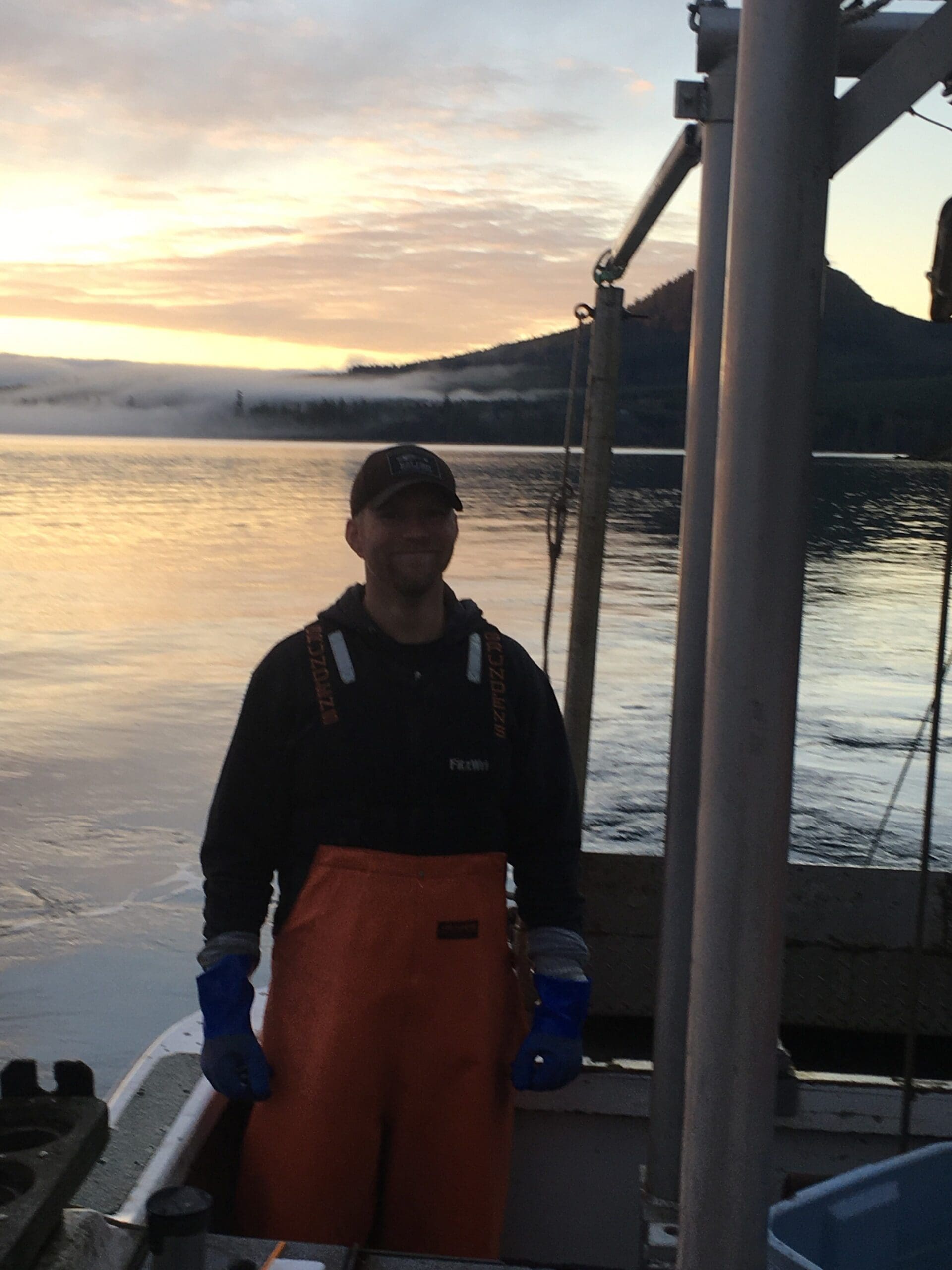 A multi-generational fisherman, Joel began fishing scallops in 2015 alongside his uncle. His wife, Melissa, a marine biologist, recently became involved in helping the family market their catch. According to Melissa and Joel’s website, “the harvest of scallops began as an experimental fishery in 2001. Joel’s Aunt and Uncle were a part of the experimental fishery for over 15 years and were dedicated to developing environmentally sound fishing practices. By 2009 Fisheries and Oceans Canada began the process of developing an Integrated Fisheries Management Plan (IFMP) for the commercial harvest of scallops.” And the family has been fishing scallops responsibly ever since.
A multi-generational fisherman, Joel began fishing scallops in 2015 alongside his uncle. His wife, Melissa, a marine biologist, recently became involved in helping the family market their catch. According to Melissa and Joel’s website, “the harvest of scallops began as an experimental fishery in 2001. Joel’s Aunt and Uncle were a part of the experimental fishery for over 15 years and were dedicated to developing environmentally sound fishing practices. By 2009 Fisheries and Oceans Canada began the process of developing an Integrated Fisheries Management Plan (IFMP) for the commercial harvest of scallops.” And the family has been fishing scallops responsibly ever since.
This wild scallop fishery is Ocean Wise recommended meaning they are:
- Abundant and resilient to fishing pressures.
- Well managed with a comprehensive management plan based on current research.
- Harvested in a method that ensures limited by-catch on non-target and endangered species.
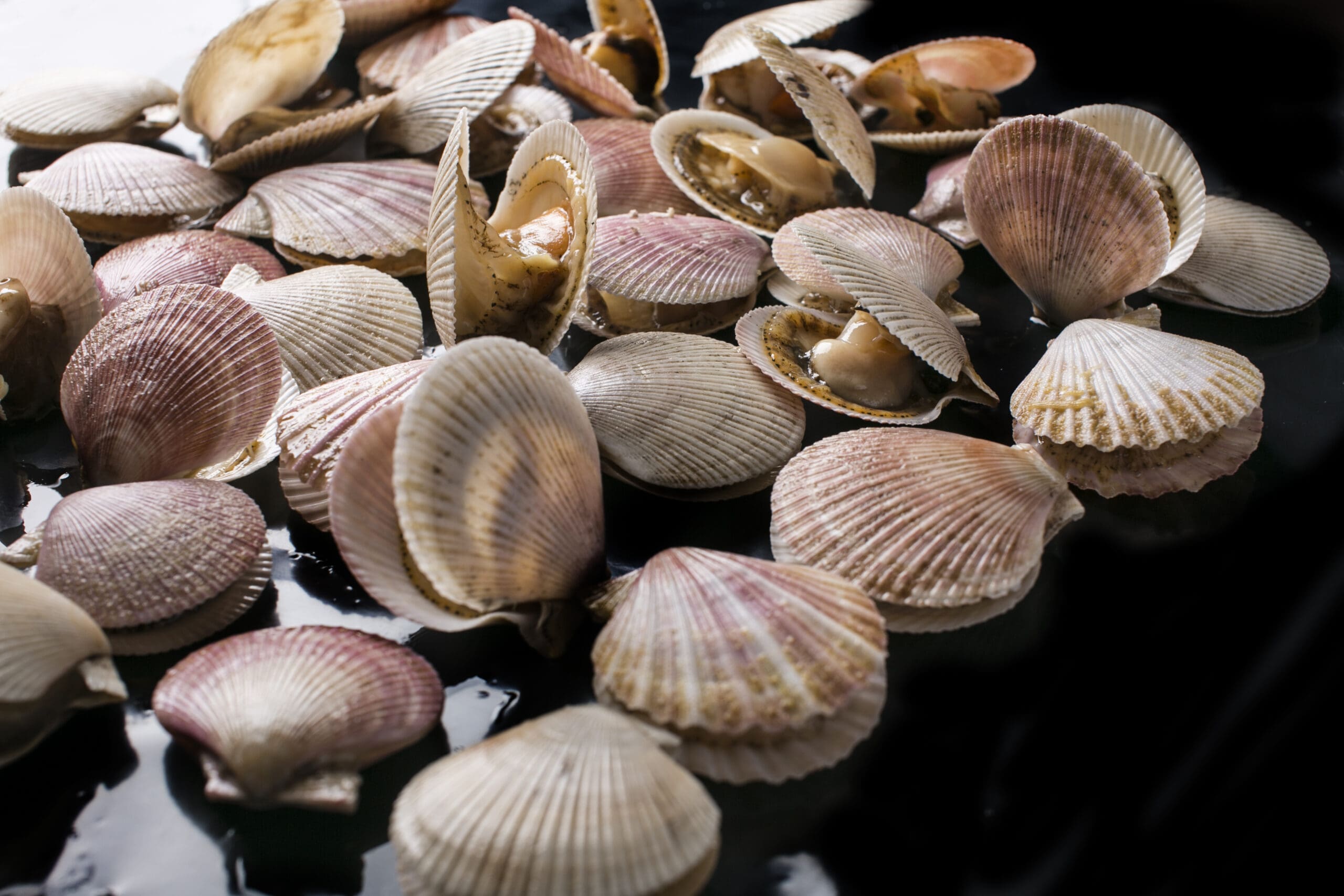 Not your typical sea scallops
Not your typical sea scallops
Joel and his family fish for two species of wild BC scallops: Pink and Spiny, and they are quite different from farmed bay scallops or sea scallops you might be used to seeing.
- They are a lot smaller — the meat is ranges from the size of a nickel to a loonie.
- Think of them more like mussels or clams: the best way to enjoy them is to steam them in water or broth. Even the ones that don’t open when steamed are fine to eat because they were guaranteed to be live when caught and frozen.
- Despite being small, they are incredibly flavourful. This New York Times article, describes them as having “a more complex flavor than sea scallops on the East Coast, are less aggressively sweet and they are balanced by a pleasant, oyster-like brininess as well as a nutty flavor usually associated with clams. At certain times during the year a small, bright orange or golden egg sac wraps around the mussel, which adds a firm, textured dimension to the natural tenderness, and accentuates its nutty flavor.”
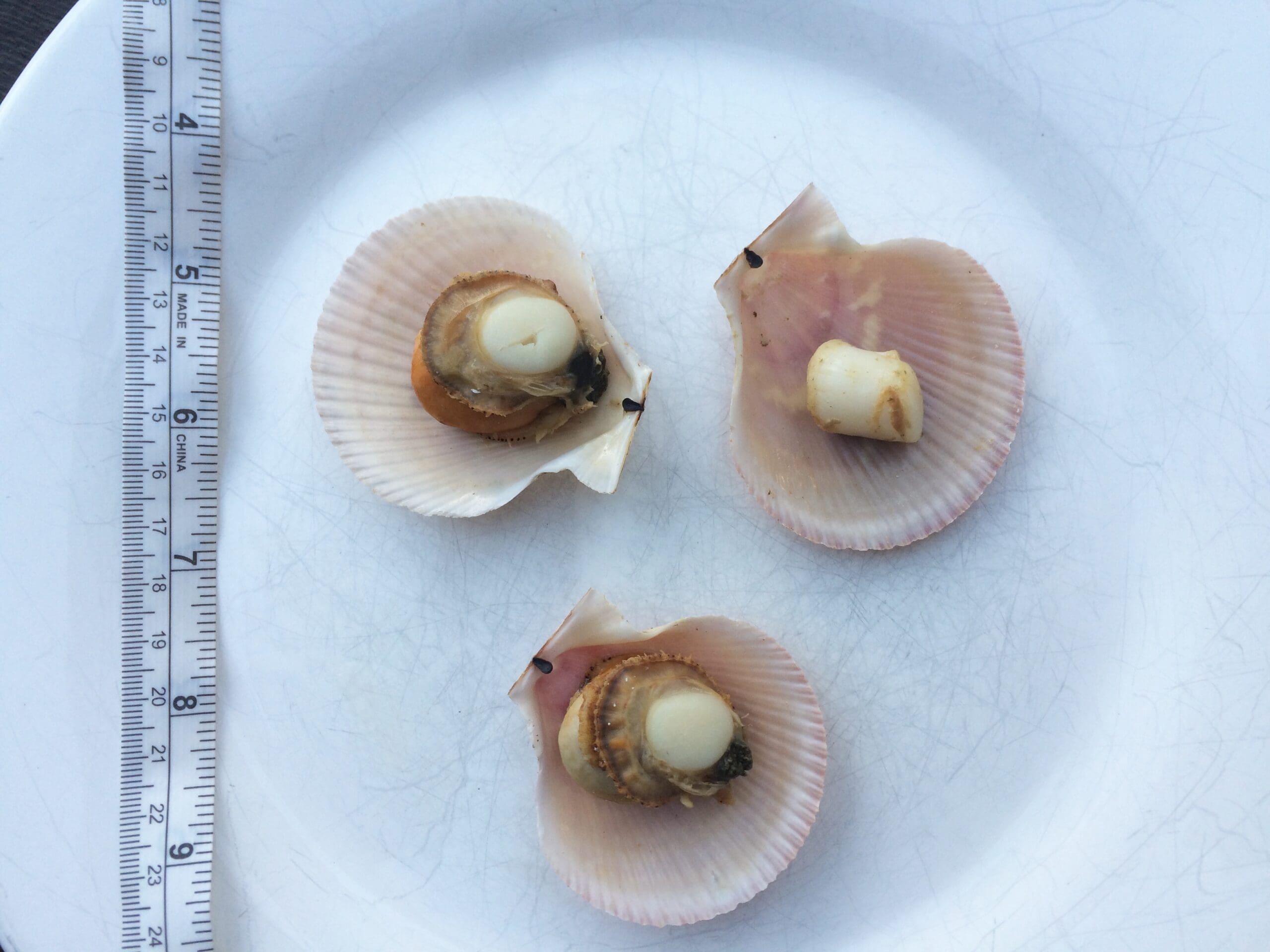
Read on for more about what makes these scallops different and so special and for tips on how to prepare them.
How are they fished?
We are always cautious when we hear the world “trawl.” Trawling can be environmentally destructive when a net is dragged carelessly along the bottom of the sea, scooping up everything in its path, and destroying sea life along the sea floor in the process. But this is not the case with the butterfly trawls used by Joel and his family. This large, wide-mouthed net was invented by one of the founding members of this relatively young fishery.
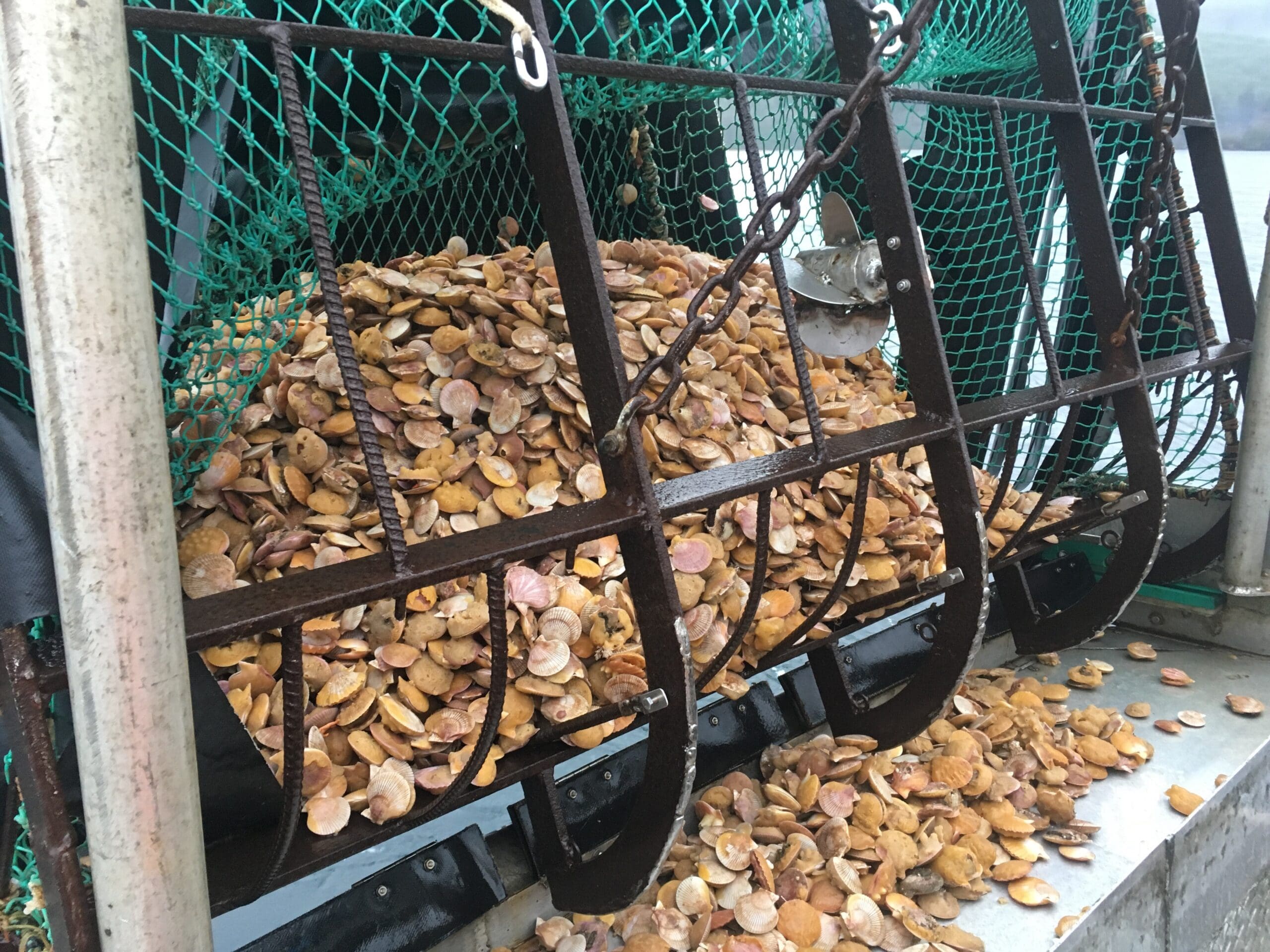
The net is dragged behind the boat while it travels at very slow speeds and steel runners guide the net above the ocean floor, minimizing sea-floor damage and by-catch (slow speed means most other species can out-swim the net). As the boat passes over the scallop beds, the vibrations from the boat and trawl cause the scallops to swim up. The trawl follows shortly after the boat and captures the swimming scallops.
Read more about how the scallops are harvested and view photos of the entire process.
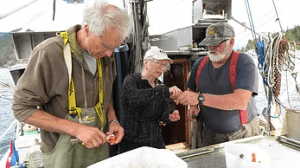
Immediately after they are caught, Joel takes his scallops into a federally inspected plant where they are flash frozen and packed into 2lb containers. And the great thing is they are loose in those containers making it easy for you to take out only what you want from the freezer that night. You can keep the rest in your freezer for up to a year!
Sustainability and supporting local fisherman is the core of Skipper Otto. If you're interested in joining our community of seafood lovers, click here to sign up.
